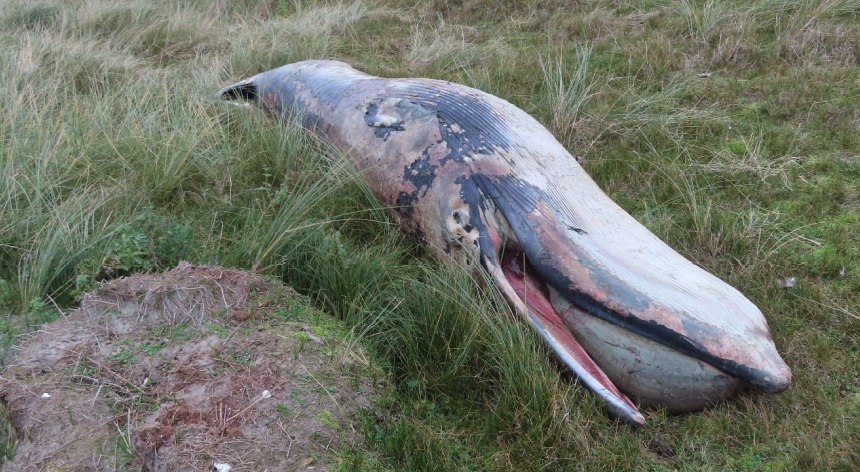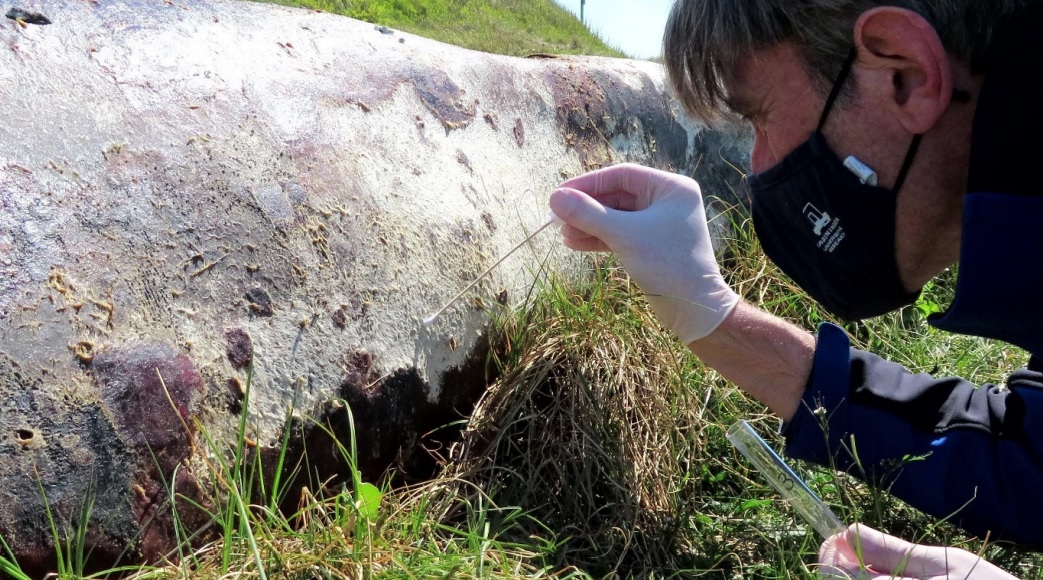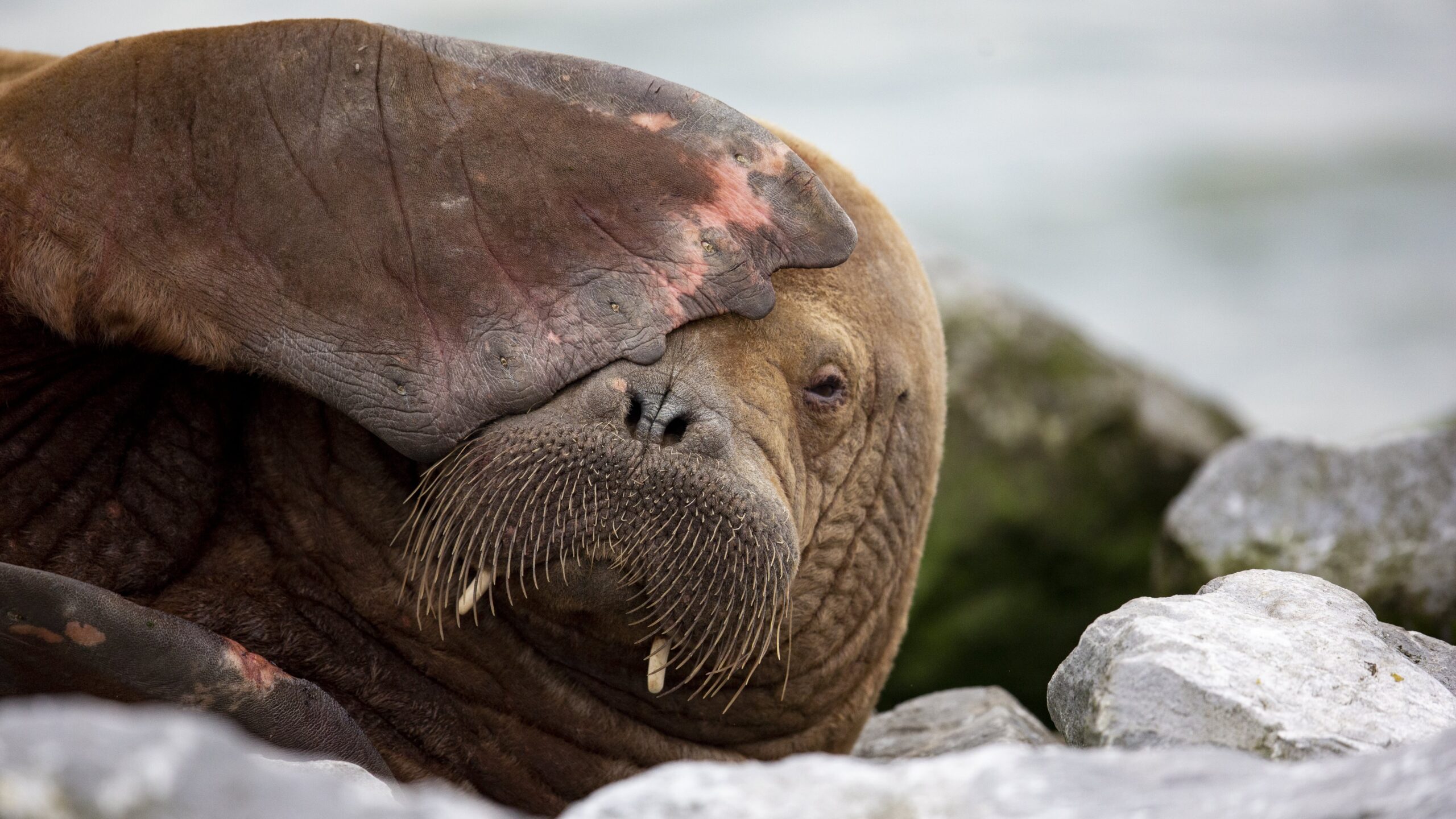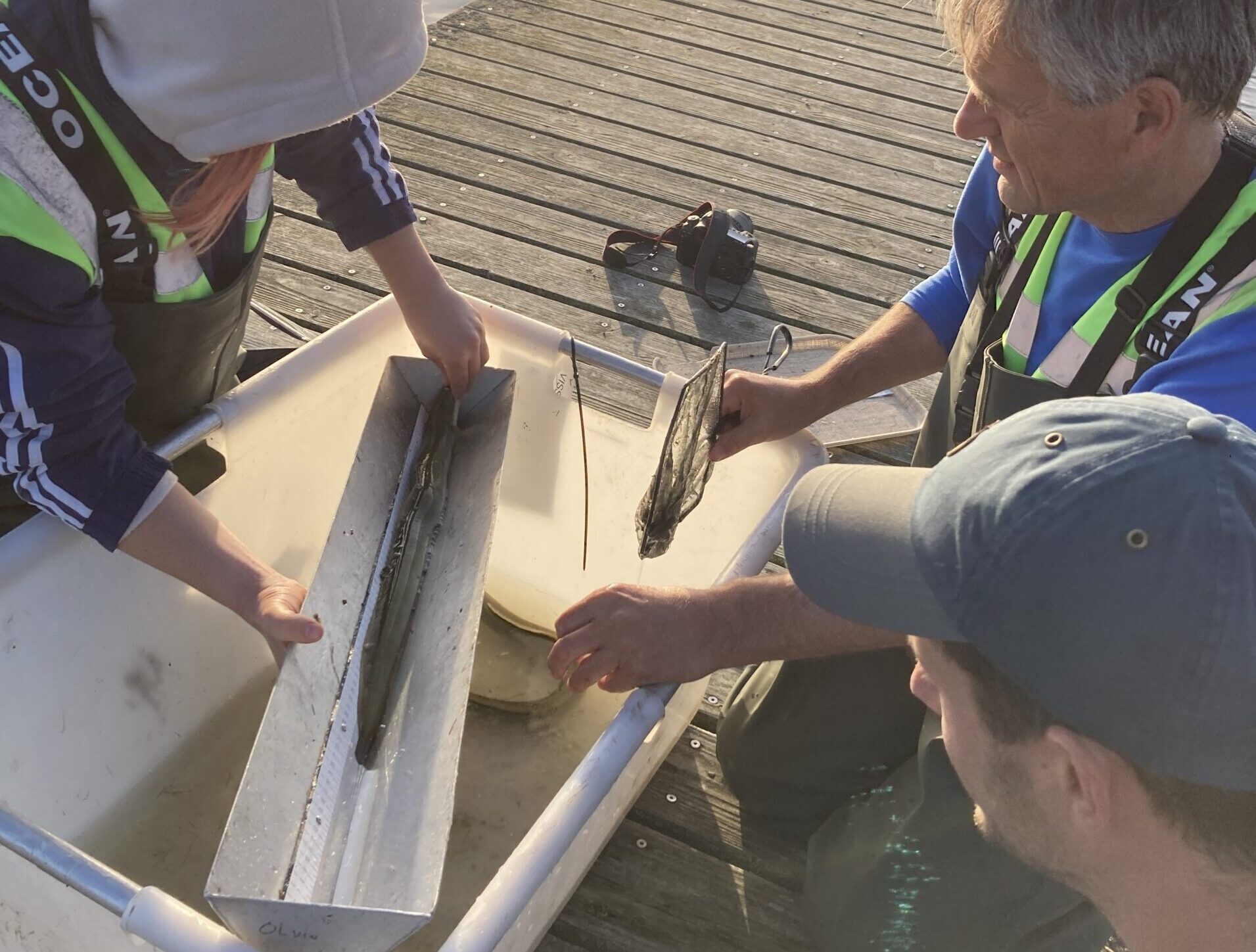Beached dead whales don’t necessarily need to be removed and disposed of. Leaving the carcasses to rot in suitable places is a good option too. That is the conclusion of a study by researchers from Wageningen University on the effects of the decomposition process in a beached minke whale deposited on the Rottumerplaat sandbank in the Dutch Wadden Sea.
The minke whale Godfried, named after the writer Godfried Bomans, was found on the Rottumerplaat at the end of 2020. The Directorate-General for Public Works and Water Management (Rijkswaterstaat) and the state forest service (Staatsbosbeheer) decided to leave the animal to decompose at a suitable spot. Wageningen Marine Research monitored the process carefully for seven months. The provisional conclusion is that nature benefits.
Burying beetle
‘Insects, in particular, benefit from this for years,’ explains lead researcher Martin Baptist. The carcass attracted a total of 57 different species of beetle, including the carrion beetles Nicrophorus vespillo and Necrodes littoralis. Of the beetles, 21 species had never been found on the island before. Some of the beetles came from the mainland, attracted by the smell of the rotting whale.

The smell is not too bad for humans, though. According to the researchers, at no point was the stench horrendously strong, although there were some days when the smell lingered and it was not pleasant to stay around for long. The researchers visited the carcass every other month to take measurements and take notes. Cameras were used to monitor the carcass continuously.
Bones
The carcass is by no means gone. Baptist estimates that it could take another three years before the flesh and skin have decomposed completely. ‘And it will take much longer before the bones are gone. These are provisional conclusions, so there will be a follow-up study. But the Department of Waterways and Public Works still has to release funding for that.’
Close to the carcass, plants die because of the high concentration of nitrogen
Martin Baptist, researcher at Wageningen Marine Research
As well as insects, the surrounding nature benefits from rotting carcasses too. According to Baptist, nutrients seeping into the soil mean that the nearby vegetation is literally greener and grows taller. ‘That is because of that barrage of ingredients. But close to the carcass, plants die because of the high concentration of nitrogen. It is so high that it becomes toxic.’
Function
It remains to be seen whether Rijkswaterstaat will return dead whales to nature more often in future. But project leader Rick Hoeksema is certainly enthusiastic. ‘Normally we dispose of a large carcass like that. Now it turns out that it fulfils a function in the ecosystem. You can imagine that will be the case, but it’s amazing to see that it really does work that way in practice.’

 The state of the carcass was studied meticulously. Photo Martin Baptist
The state of the carcass was studied meticulously. Photo Martin Baptist 

